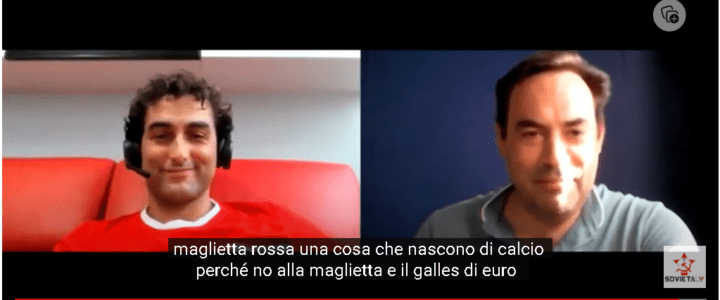Welcome to the fascinating world of Russian watches! In an exclusive interview conducted by Andrea, known as Sovietaly, we delve into the collection of Vittorio, a passionate enthusiast of Russian watches with an engaging story to share.
If you’re curious about exploring the world of Russian-inspired watches, get ready for an exciting journey that will take us through the history, technology, and uniqueness of these timepieces.
This interview video offers a privileged insight into Vittorio’s passion for Russian watches and the captivating stories behind each piece in his collection.
Introduction: Welcome! Whether you are a watch enthusiast or simply curious to explore a unique world, you are in the right place. This video by Andrea, known as Sovietaly in the watch world, takes us on an engaging journey through the collection of Vittorio, a lover of Russian watches with an overwhelming passion for the history and technology behind these incredible pieces.
Summary: In Andrea’s interview with Vittorio, we get an up-close look at Vittorio’s passion for Russian watches. Before becoming a collector, Vittorio developed a deep interest in the Russian language and culture, learning the language and visiting the country. Originally from Frosinone, Italy, but now residing in Warsaw, Poland, Vittorio shares how his passion for Russian watches grew over the years, starting with the serendipitous discovery of a 1990s Molnija pocket watch at a market. His collection, though not vast, includes significant pieces such as the Canfie Dia, his favorite watch due to the rich history it embodies.
Vittorio explains his extensive knowledge of the Russian language, almost at a native level, and his ability to converse fluently on any topic. He recalls his visits to Russia, starting in 2005, and his regular trips since then. Despite living in Poland for many years and initially knowing Polish only for tourist purposes, he later had to deepen his knowledge for work-related reasons.
Vittorio’s collection of watches extends beyond Russian models, including Swiss and Japanese pieces, reflecting his curiosity and openness to diverse cultures. He discusses the technical innovations and unique stories behind Russian watches, such as the use of plexiglass for waterproofing in Soviet-era dive watches, and his interest in the mechanical aspects of these timepieces.
Vittorio also shares his views on historical events, particularly the period from 1917 to 1991 in Russia, and his fascination with Soviet technological advancements like atomic icebreakers and amphibious vehicles. His passion for Russia goes beyond watches, encompassing history, geography, geopolitics, and culture, including 1990s and 2000s music that helped him learn the Russian language.
Finally, Vittorio mentions his online presence, including a website and participation in watch enthusiast forums, and his use of social media to share photos of his travels and collections. His enthusiasm for Russian watches is evident as he describes their stories, technical solutions, and the unique blend of history and technology they represent.
Conclusion: Andrea’s interview with Vittorio has been an exciting experience, taking us into the world of Russian watches through the eyes of a passionate enthusiast. With fascinating stories, technical curiosities, and palpable passion, Vittorio has introduced us to a universe where history and technology merge uniquely.



